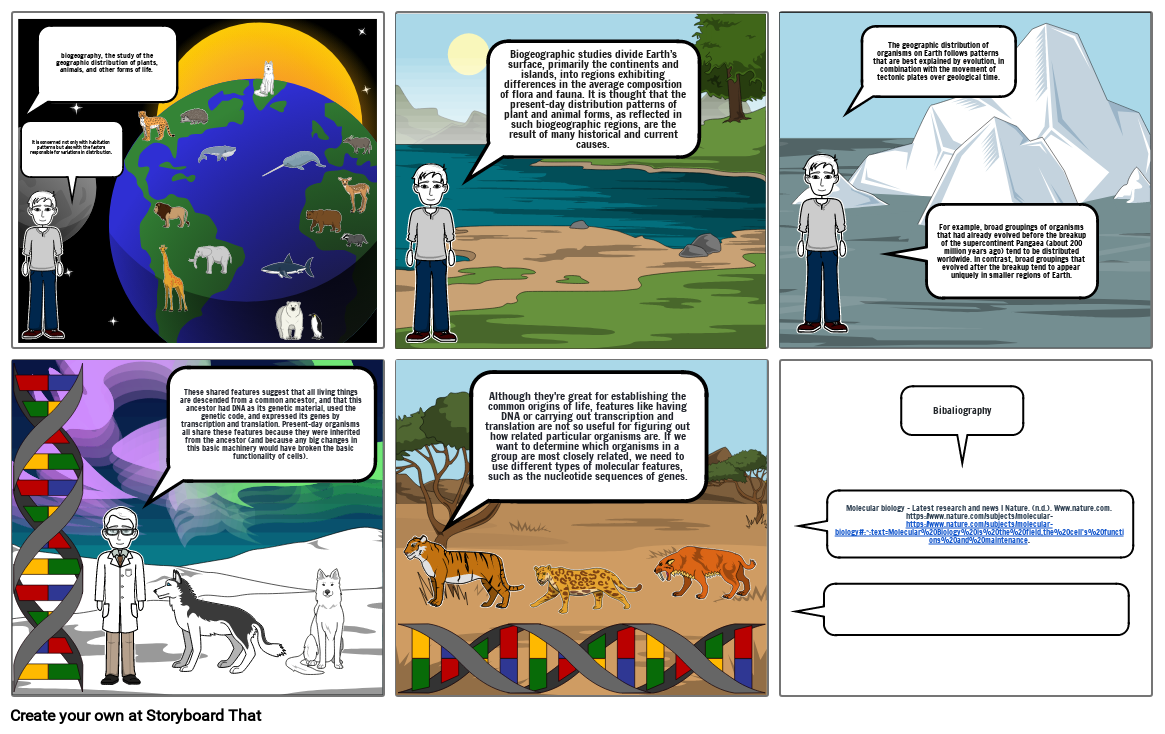Unknown Story

Storyboard Text
- biogeography, the study of the geographic distribution of plants, animals, and other forms of life.
- It is concerned not only with habitation patterns but also with the factors responsible for variations in distribution.
- Biogeographic studies divide Earth’s surface, primarily the continents and islands, into regions exhibiting differences in the average composition of flora and fauna. It is thought that the present-day distribution patterns of plant and animal forms, as reflected in such biogeographic regions, are the result of many historical and current causes.
- The geographic distribution of organisms on Earth follows patterns that are best explained by evolution, in combination with the movement of tectonic plates over geological time.
- For example, broad groupings of organisms that had already evolved before the breakup of the supercontinent Pangaea (about 200 million years ago) tend to be distributed worldwide. In contrast, broad groupings that evolved after the breakup tend to appear uniquely in smaller regions of Earth.
- These shared features suggest that all living things are descended from a common ancestor, and that this ancestor had DNA as its genetic material, used the genetic code, and expressed its genes by transcription and translation. Present-day organisms all share these features because they were inherited from the ancestor (and because any big changes in this basic machinery would have broken the basic functionality of cells).
- Although they're great for establishing the common origins of life, features like having DNA or carrying out transcription and translation are not so useful for figuring out how related particular organisms are. If we want to determine which organisms in a group are most closely related, we need to use different types of molecular features, such as the nucleotide sequences of genes.
- Tabery, J., Piotrowska, M., Darden, L. (2019). Molecular Biology (Stanford Encyclopedia of Philosophy). Stanford.edu.https://plato.stanford.edu/entries/molecular-biology/
- Molecular biology - Latest research and news | Nature. (n.d.). Www.nature.com. https://www.nature.com/subjects/molecular-https://www.nature.com/subjects/molecular-biology#:~:text=Molecular%20Biology%20is%20the%20field,the%20cell's%20functions%20and%20maintenance.
- Bibaliography
Over 30 Million Storyboards Created

